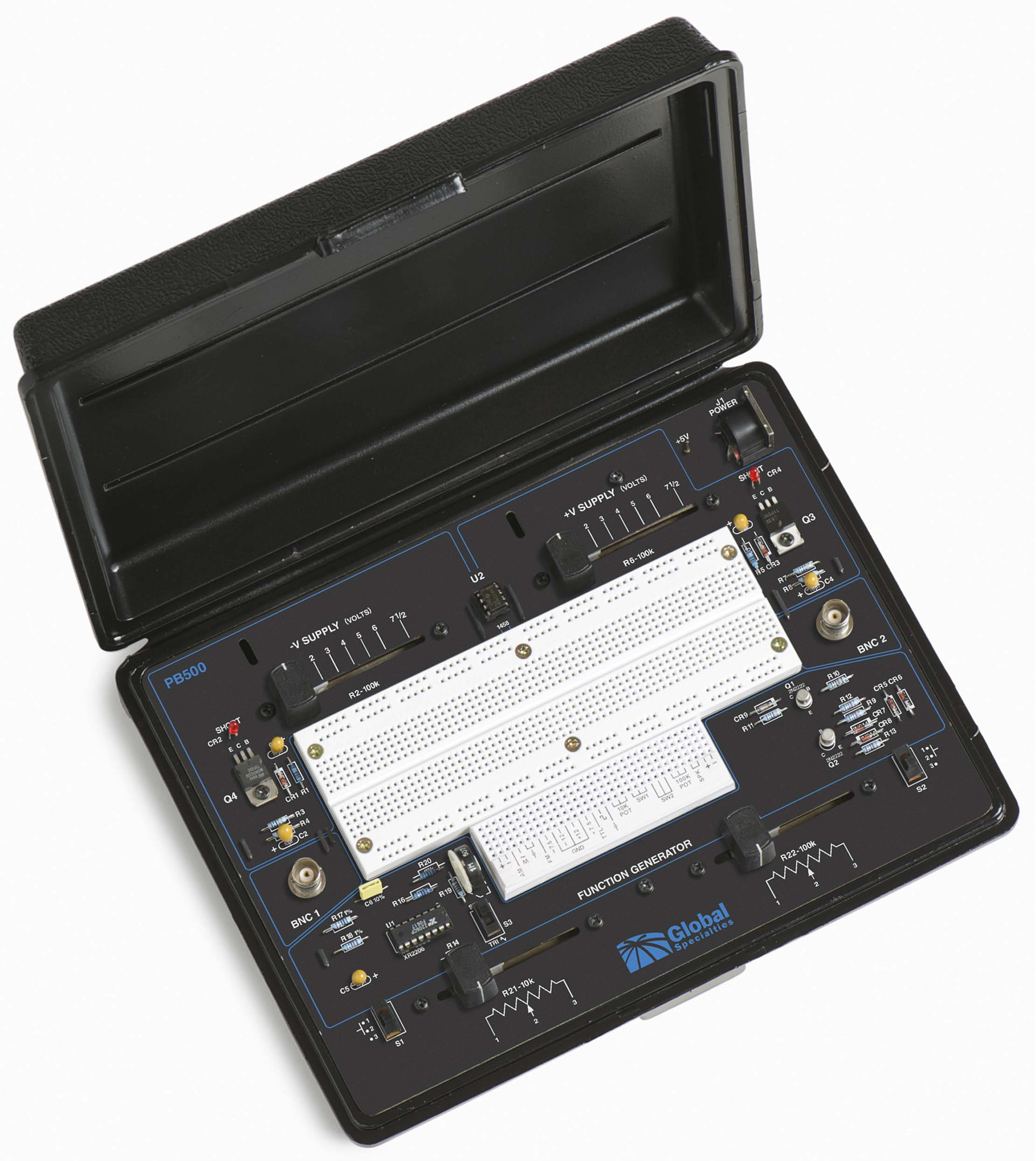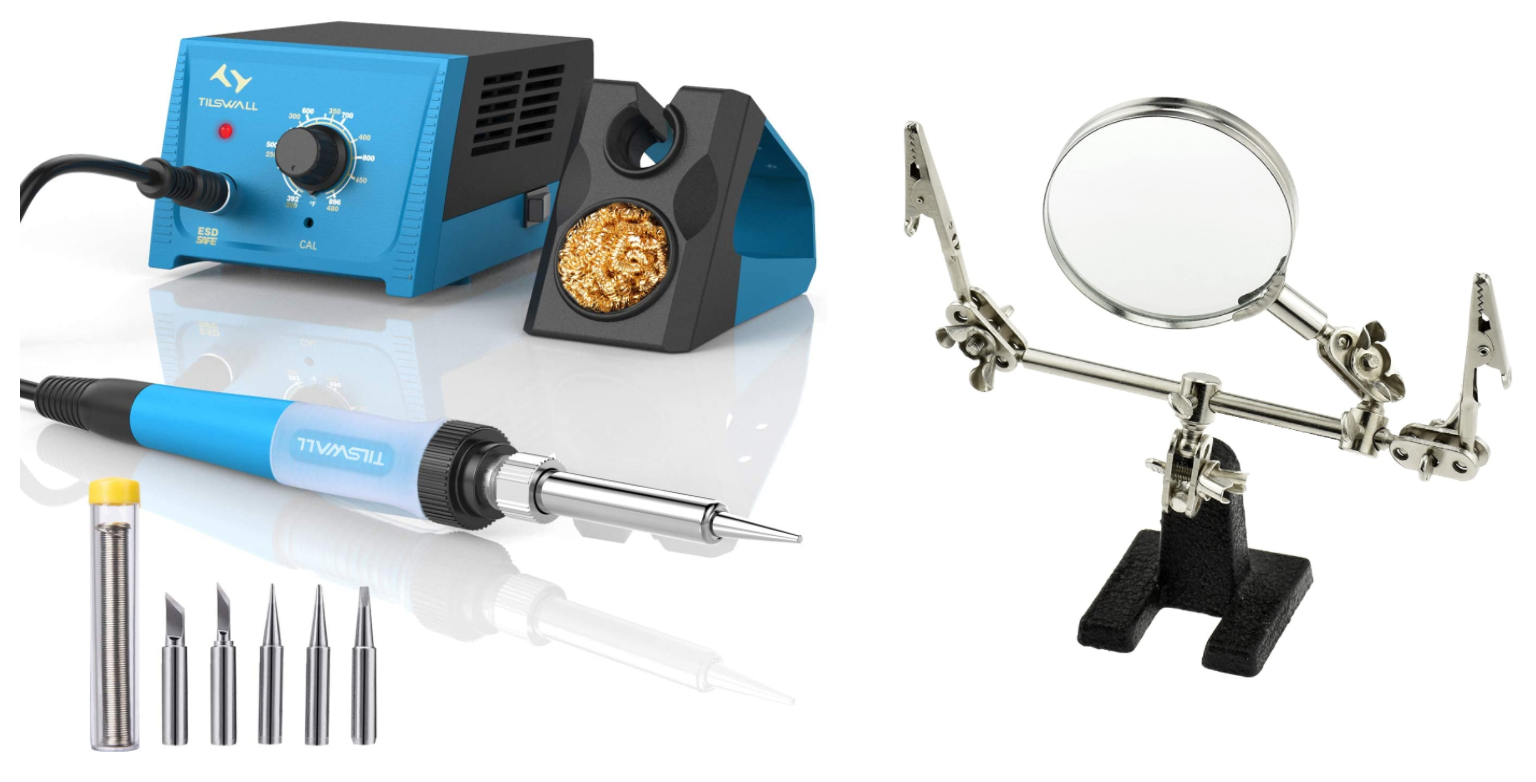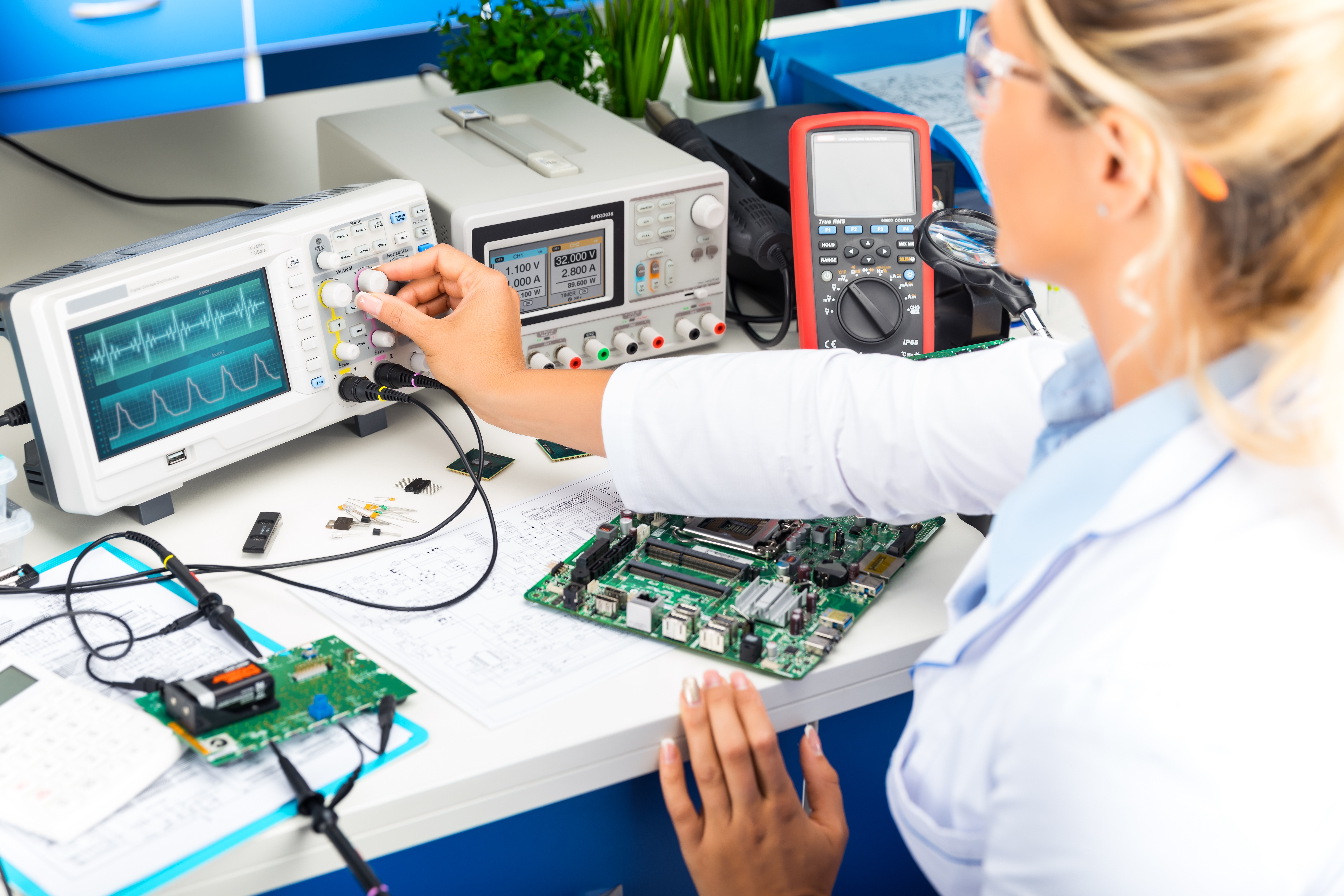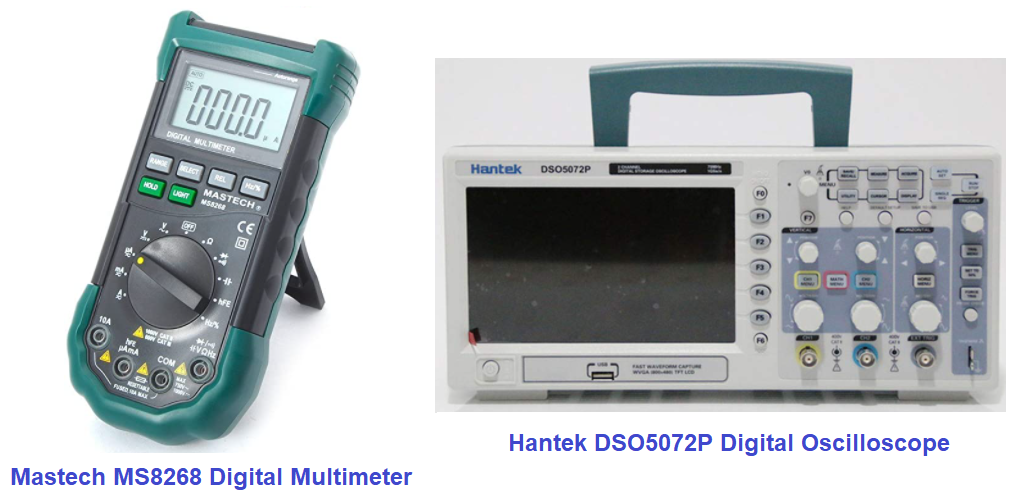CAN COMPONENT-LEVEL ELECTRONICS BE TAUGHT EFFECTIVELY WITHIN AN eLEARNING PROGRAM?
While there has been a steadily growing interest in eLearning over the past several years, the advent of the pandemic in early 2020 and the resultant lockdowns made remote learning, at least temporarily, an absolute necessity. Even as schools have returned to on-campus classes, the interest in eLearning has persisted and steadily increased. Advancements in digital technology have allowed vast improvements in interactive online course programs.
Yet a great challenge remains in the areas of CTE and STEM, both of which, if taught effectively, require significant hands-on experience.

In answer to the question raised in the title of this article, at PRESSON Circuit Modules, we strongly believe the answer is YES! In fact, we believe the mastery of theoretical and mathematical concepts within an online electronics technology program can be blended seamlessly with hands-on laboratory experimentation and project development.
With PRESSON courseware, this simultaneous cognitive and kinesthetic learning takes place through performance of what we call lab/theory lessons. Below is a link to a PDF excerpt from this form of lesson:
C51_Course_Excerpt.pdf (pressoncircuitmodules.com)
Note that in performance of this sample exercise involving the PRESSON C51 Microcontroller Module, after reading a section of theoretical material and studying an example showing its application, the student performs a programming activity reinforcing the concept being taught. .
These actions can be performed seamlessly throughout the lesson because the student will have already interfaced the PRESSON C51 Microcontroller Project Launcher with a PC or Laptop via the Silicon Labs DEBUGADPTR.
This connection allows the student to enter, run, and analyze short code snippets via the Silicon Labs IDE while progressing through the lab/theory lesson. The Silicon Labs IDE (Integrated Development Environment) is an open-source programing platform for 8-bit microcontrollers, available as a free download at siliconlabs.com
Currently, PRESSON freestanding and breadboard circuit modules are available in unassembled kit form. PRESSON circuit modules and courseware are designed for use by students who have already taken courses in basic DC/AC and semiconductor technology. Thus, we assume they have also learned basic soldering skills. However, we are planning to provide a tutorial in video form to assist the student who is new to PCB soldering.

A key to success for maintaining a hands-on electronics course in an eLearning format is to ensure that assembly procedures and lab exercises are written in sufficient detail.
We believe that PRESSON kit assembly procedures contain enough detail to minimize any confusion that could arise while the student is working remotely. Below is a link to a PDF excerpt from a PRESSON kit assembly procedure that should verify this point:
TSFC_Assy_Exerpt.pdf (pressoncircuitmodules.com)
Another key step in developing a hands-on electronics course for the eLearning channel is to ensure students have sufficient resources in their possession to perform the required procedures and lessons remotely.
At first, the notion of setting up a home electronics workstation might seem prohibitively expensive. Fortunately, there are portable electronics trainers, with built-in DC voltage sources and function generators that are ideal for home use. They provide a perfect platform for performing lessons involving PRESSON breadboard modules! Assuming students are enrolled in a hybrid course program (a combination of on-campus and remote learning), they can build their circuitry on the breadboard section of the trainer, then carry the trainer with them to the school’s electronics lab facility. The Global Specialties PB500 portable analog circuit trainer (shown below) can be purchased at Electronix Express for around $230.00

Because PRESSON circuit modules are provided in unassembled kit form, resources for the student working at home would include a temperature controlled soldering station and a Helping Hands tool. The Tilswall soldering station, shown below, is available through Amazon for less than $40.00. The Helping Hands tool can be purchased from either Marlin P. Jones and Associates (MPJA.com) or Amazon for around $11.00.
This tool is a very handy item for the home electronics workstation. As seen below, the tool has alligator grips for holding a circuit board in position and a magnifier, which is handy for reading markings on components and inspecting soldering work.

Online course programs, when administered effectively, are beneficial to both the student and the educational institution. Community colleges and technical schools can reach a greater student base while maintaining a smaller teaching staff. Students, who are likely to be juggling work and school commitments, are spared the ordeal of long commutes. This allows greater flexibility in completion of course work.
For the hands-on electronics eLearning program, this flexibility and freedom can only be achieved if the student has a fully functional home-based workstation. Having identified a high-quality portable trainer and soldering tools, we are well on the way to making the home electronics lab a reality! But to complete the task we need to identify the test equipment required to perform the eLearning course work.

Some electronics engineering programs rely heavily on computerized simulations of electronic circuits and test equipment for performance of lab work. At PRESSON, however, we believe an electronics course cannot be truly hands-on unless the students do, in fact, get their “hands on” actual electronics components, circuit boards, and test equipment! These are items that a trained electronics or mechatronics technician must work with daily. The most essential piece of electronic test equipment for the home-based workstation is the digital multimeter.
For student use, an economical hand-held product such as the Mastech MS8268 (shown below) is more than adequate. This multimeter is available at Amazon for less than $42.00. While much of the lab work contained in PRESSON courseware can be performed using a multimeter, several of the more advanced lessons require observation and analysis of waveforms. For this reason, the student could benefit greatly from investing in a portable oscilloscope. The Hantek DSO5072P digital oscilloscope (shown below), is available at Amazon for less than $240.00.

Through this article, we have attempted to identify two key factors necessary for the successful eLearning-based, hands-on electronics technology course:
- The program must have precisely written course material with clearly identified learning objectives. The course materials must be detailed enough to allow the student to work independently, with minimal confusion about completion of assigned tasks. This is especially true for those procedures involving circuit board assembly and connection of power sources and test equipment during lab exercises.
- The student must have adequate resources available at his remote learning location to complete the lab/theory exercises. These resources include soldering equipment, electronic test equipment, and a high-quality portable analog trainer. Suitable examples of these items have been identidied in this article, representing a student cost of less than $600.00.
PRESSON Circuit Modules, Inc.has already designed several circuit module kits and written enough courseware and documentation (in PDF form) to support a short course program covering industrial applications of MCUs, sensors, and wireless communication circuitry. The company is now engaged in broadening the scope of its industrial electronics curriculum to include operational amplifiers and electromechanical actuators. At the same time, we are elevating existing course materials to an interactive eLearning platform. For more information about PRESSON circuit module kits and courseware, please contact us at [email protected].

Back To Blog
